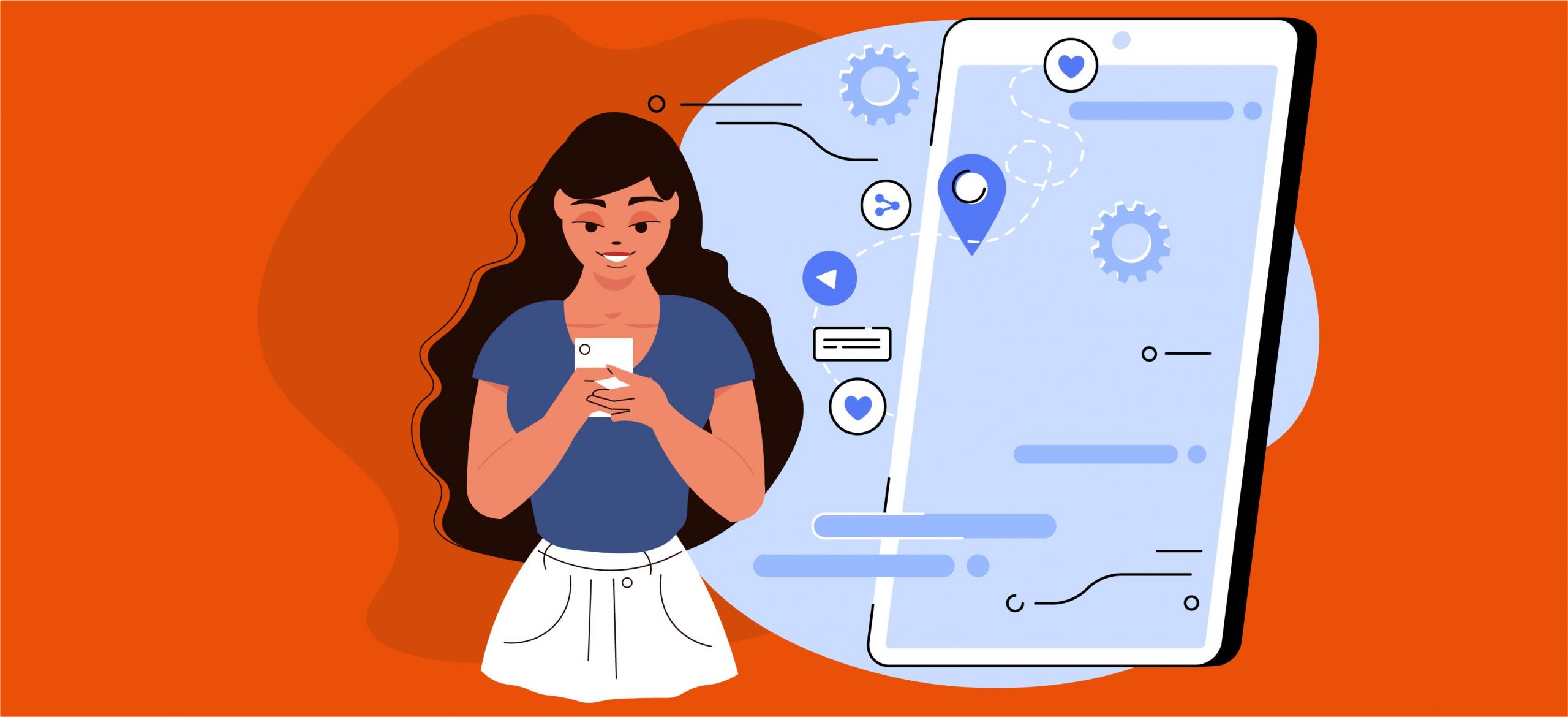How can I use AI marketing for my target audience?
Having trouble implementing the right advertisements? AI marketing serves to give your business the highest ROI and impressionability for your customers.
Posted: Feb 8, 2022
Last Updated: Feb 8, 2022

Has your company been struggling to find a successful marketing direction? Look no further, as artificial intelligence (AI) marketing holds all the solutions to your marketing problems. In simple terms, AI marketing automates decisions quickly on where and when your advertisements should be shown online to your target audience. This process is based on data collection, historical analysis, and observation of current trends across multiple platforms. For example, if your firm owned a flip flop brand that sells in the U.S., an AI platform may give you these segmented characteristics about your potential customers:
- Demographics: (Male/Female, Ages 15-25)
- Geography: (3 mins away from beach/lakefronts)
- Interests: (surfing, paddleboarding, saltwater)
- Behaviors: (watch surfing videos at 12:00 p.m., 9:00 p.m.)
- Hours of purchase: ( 5:00 -7:00 p.m.)
- Weather: (Windy, Sunny)
- Devices: (Desktop, Smartphone)

Essentially, AI marketing software tend to answer these major questions:
- How likely is that person on our website to buy our product or service?
- How much will the customer buy of this product this year?
- Is this customer becoming tired of our brand?
- What are the personality traits of my customers?
Within several days, AI discovers relevant customer data with a minimum of 500 customer interactions. And, AI selects the correct ad campaign for your target audience’s specific tastes before they even touch the keyboard.
Removing the Guesswork with AI Marketing
Firstly, third-party platforms perform AI analysis and give direction for advertisement campaigns quickly and efficiently. Typically, human analysis takes longer and lacks availability on all internet platforms. Facebook, Google, Instagram, and IBM have the best AI engines to utilize when finding possible platforms to place your advertisements. In a time when 76% of customers expect companies to understand their wants and needs, AI is the perfect solution for every customer. Looking at the best methods to utilize AI marketing, programmatic advertising is extremely promising in its effectiveness to automate the process of buying and selling digital advertising.
Long ago, firms manually sold their advertisement campaigns to individual websites. Oftentimes, the negotiation of prices for these display advertisements was laborious and costly. The old method of “hit or miss” was costing marketers too much capital so programmatic advertising became the worthy solution. Essentially, AI Media buying removes all the guesswork typically required from marketing teams.
AI Media Buying/Programmatic Advertising:
Even if you have the most brilliant advertising campaign in the world, if not shown to the right target audience, the campaign will not make conversions. Programmatic advertising uses AI and real-time bidding to efficiently streamline the ad buying process. It is a true multi-channel strategy, as it casts a wider net on multiple platforms which is essential for niche and geo-targeted businesses. Most of all, these systems are extremely adaptive and flexible to the constantly changing landscape of digital marketing.

How does AI Bidding work?
A bid represents the amount of money a firm is willing to pay for a single click on their advertisement (PPC-Pay per Click). In AI bidding, the machine continuously mines, interprets, and learns from new consumer data to place bids efficiently and as cheaply as possible on ad host websites. Machine learning tracks messaging and other personal data to cater specific bids to people more responsive to logic, humor, or emotional appeal. It also recognizes the relevance of keywords for certain product traits. Because of these capabilities, there is a positive correlation between higher return-on-investment (ROI) and the use of AI systems for marketing campaigns.
The Economist
One example of the many successes of programmatic advertising is how the digital and print publication, “The Economist”, generated 650,000 impressions and a return on investment of 10:1 in a span of several years, beginning in 2014. By analyzing customer, content, and cookie data, the firm tailored its advertising to its specific audience. Since “The Economist ” had a wide variety of topics on their website, their initial AI analysis divided their ad campaigns to target customers with different topic interests. The main topics were segmented into finance, politics, economics, good deeds, careers, technology, and social justice. Online users each received tailored ads that focused on one of these topics, and a click on the advertisement would lead the user to the most popular article on the niche topic. For instance, someone who had an inclination towards technology would receive an advertisement about a popular “The Economist” technology article.
The news company created over 60 unique advertisements which ended up giving outstanding results. “The Economist” gained 9500 new subscribers with a lifetime value of $15 million, a 64% increase of awareness in U.S. audiences, and 1 million unique website visitors. It is safe to say “The Economist” successfully utilized the full potential of programmatic advertising.
AI Media Buying Statistics:
Currently, programmatic advertising is growing in popularity for B2C and B2B firms. U.S. AI programmatic advertising is projected to surpass $79.6 billion in spending in 2021 after reaching $63.3 billion in spending the year prior. Next year, expenditures are projected to grow 19.3% to a total of $94.97 billion in yearly spending. Now, AI media buying takes up 72% of all digital display expenditures.
Without programmatic advertising, your firm’s campaign wouldn’t utilize all of the tools and engines across the internet. Before it becomes overwhelmingly expensive, take advantage of programmatic advertising before it’s too late. An initial testing phase will reveal the conveniences of this analytical tool.

Chatbots: Conversational AI
Currently, customer service is becoming increasingly more valuable as customers tend to expect intelligent and helpful answers at a moment’s notice. Chatbots can be a cheap and efficient alternative to customer service agents. Instead of talking to a real agent, a chatbot can answer basic queries without customers having to dial the phone. These online interactive agents can leverage past questions and historical data for each customer to deliver personalized results. Most importantly, the chatbots allow marketing teams to identify what advertising campaigns contributed to the highest ROI.
Rule-Based Chatbots
Rule-based chatbots are a cheaper application of digital conversation robots. People interact with these chatbots by clicking on predefined options that eventually lead them to their desired answers. These bots are especially great for collecting data and giving simple replies to customers. However, rule-based chatbots aren’t tailored well for complex scenarios that can’t rely on typical keyword recognition. Additionally, rule-based chatbots usually lead customers to their goals much more slowly than chatbots that utilize artificial intelligence.AI Conversational Chatbots
Chatbots that use artificial intelligence and machine learning “think” and “talk” as real people when interacting with customers. At the beginning of their deployment, conversational chatbots are taught to recognize simple keyword phrases taught by chatbot developers. Eventually, these chatbots can engage in free-flowing conversation, giving your firm the highest possible chance for product conversions. These bots remember historical data like rule-based chatbots but react to the preferences and tone of the conversation. Thus, the conversations end with much more personalized user experiences. As AI chatbots have more user interaction, their ability to recognize keywords and give more intelligent answers substantially increases.

How to set up your chatbot
When setting up your chatbot, first identify the type of chatbot needed for your website. Then, host the chatbot on a channel; some of the more popular ones are Chatfuel, Diag flow, and Google Assistant. For rule-based chatbots, design the conversation flow by inputting common keywords. Then, add questions a typical customer would have about your brand/product. AI chatbots have more moving parts, so developers need to constantly tweak responses and give larger amounts of source material to the chatbot. Developers typically release the AI chatbot in a testing phase before it reaches full functionality. Some software systems such as ERP and CRM can help with this setup process by teaching the conversational chatbot a baseline of knowledge before it reaches full customer service functionality.
Stats/Pricing-elaborate
Unless your firm has a large budget for customer service, AI chatbots are not practical for most businesses. Luckily, most rule-based chatbots can run on your website free of cost. But, a conversational AI chatbot will typically cost $30,000 a year to run while a higher tier AI chatbot will cost upwards of $90,000 a year to run on your website. The costs include the license to run the software platform, the set up of the chatbot, and ongoing chatbot support and maintenance.
AI Marketing in Action
While the design of an advertisement is always at the core of a campaign, the location of the display advertisements is just as important. AI marketing replaces the long hours of manual research and streamlines your advertising campaign across multiple internet platforms. Programmatic advertising, a branch of AI marketing, uses real-time bidding and AI analysis to discover the best areas to place your ads for your potential customers. By using programmatic advertising, your firm can grow at an exceedingly fast pace like “The Economist.” Thanks to AI media buying, the guesswork of advertising that previously held companies back is no longer a constraint.
And, after customers click on your ads, chatbots are perfect for cultivating an excellent personal experience. Chatbots are an easy solution to your customer service needs as they answer simple queries without customers having to contact a full-time service agent. With more and more customer interactions, these chatbots will have smarter conversations based on keyword recognition and historical analysis.

For a firm of any size, the best method to increase your conversion rate is to use programmatic advertising/AI media. Rule-based chatbots should be implemented for firms of all sizes, as they are free to operate and will help customer service interactions tremendously. AI chatbots are best used for sizeable firms whose customers have a larger variety of questions. Overall, chatbots and programmatic advertising allow companies to extend their outreach to their target audience efficiently and effectively by the use of Artificial Intelligence.
Need help setting up your own AI marketing campaign?
USDP is here to help! Contact us today and we can get started right away.

Nick Zinn
Digital Marketing Manager